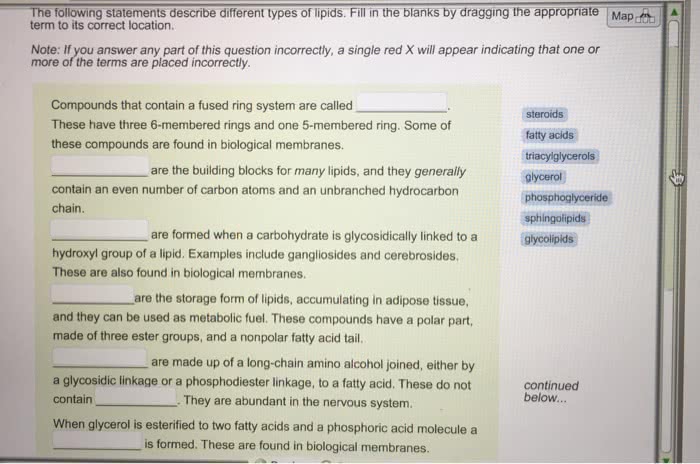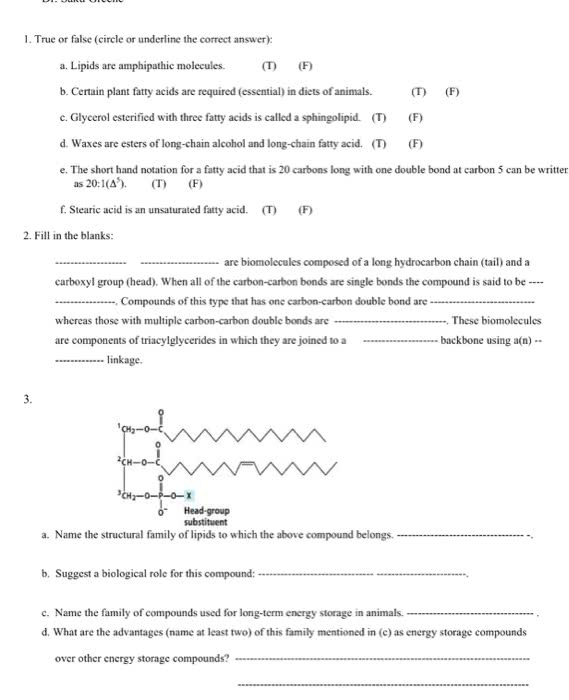CHE 211 Study Guide - Final Guide: Carnauba Wax, Rheumatoid Arthritis, Carboxylic Acid

Organic Chemistry 2: Lipids
Nonglyceride Lipids
Sphingolipids
Spingolipids are a group of phospholipids that are abundant in the
biological membrane of the brain and nerve tissue
Spingolipids are esters formed when a fatty acid reacts with an 18C chain alcohol called
sphingosine instead of glycerol (hence they are called non-glyceride lipids)
These lipids are based on sphingosine
▪ Long-chain
▪ Nitrogen-containing
▪ Alcohol
Amphipathic (has polar and non-
polar properties), like phospholipids
Contains a polar head group
Also contains 2 NON-POLAR
fatty acid tail
These are structural components of the cellular membranes
The two major categories of sphingolipids are:
- Sphingomyelins (they only sphingolipids that contain the phosphate group)
- Glycospingolipids
Types of Sphingolipids
o Sphingomyelins
- Structural lipid of nerve cell membranes
- Important structural feature of myelin sheath (this is a protective insulated
coating that surrounds nerves)
o Glycosphingolipids
- When the amino-group of sphingosine forms an amide with a carboxyl group of a
fatty acid, this results in the formation of ceramide
- The glycosphingolipid is formed when a terminal hydroxyl group of the
sphingosine portion of the ceramide reacts with a monosaccharide such as
glucose (Built on a ceramide)
- Glycosphingolipids is a lipid that contains both the fatty acid and a carbohydrate
component attached to a sphingosine molecule
- Cerebrosides have a single monosaccharide head group
• Glucocerebroside (when glucose is attached to ceramide)
• Galactocerebroside (when galactose is attached to ceramide)
- Glycosphingolipids are important components of nerve membrane and muscle
find more resources at oneclass.com
find more resources at oneclass.com
Document Summary
Spingolipids are a group of phospholipids that are abundant in the biological membrane of the brain and nerve tissue. Spingolipids are esters formed when a fatty acid reacts with an 18c chain alcohol called sphingosine instead of glycerol (hence they are called non-glyceride lipids) These lipids are based on sphingosine: long-chain, nitrogen-containing, alcohol. Amphipathic (has polar and non- polar properties), like phospholipids. Also contains 2 non-polar fatty acid tail. These are structural components of the cellular membranes. The two major categories of sphingolipids are: Sphingomyelins (they only sphingolipids that contain the phosphate group) Important structural feature of myelin sheath (this is a protective insulated coating that surrounds nerves: glycosphingolipids. When the amino-group of sphingosine forms an amide with a carboxyl group of a fatty acid, this results in the formation of ceramide. The glycosphingolipid is formed when a terminal hydroxyl group of the sphingosine portion of the ceramide reacts with a monosaccharide such as glucose (built on a ceramide)



